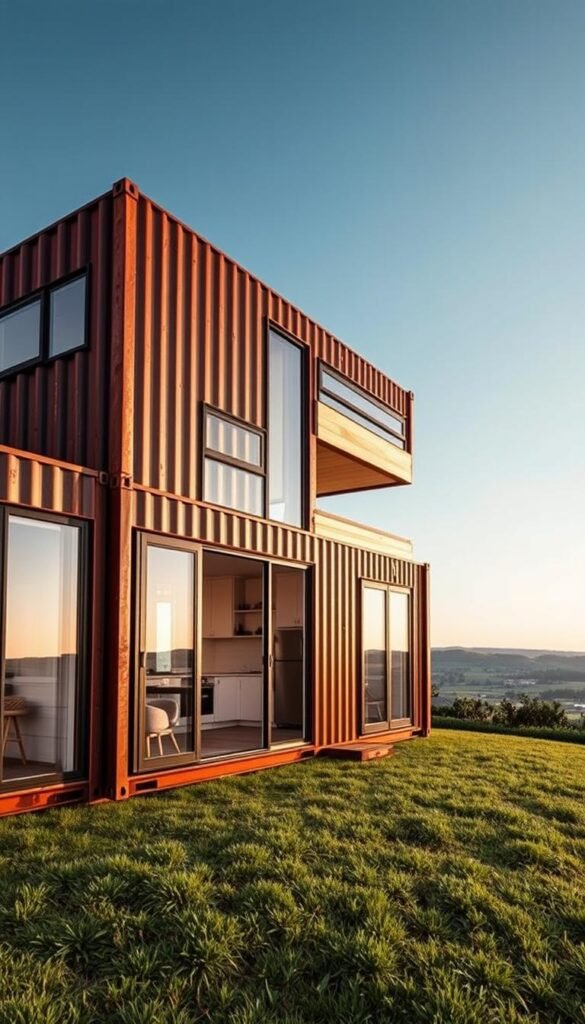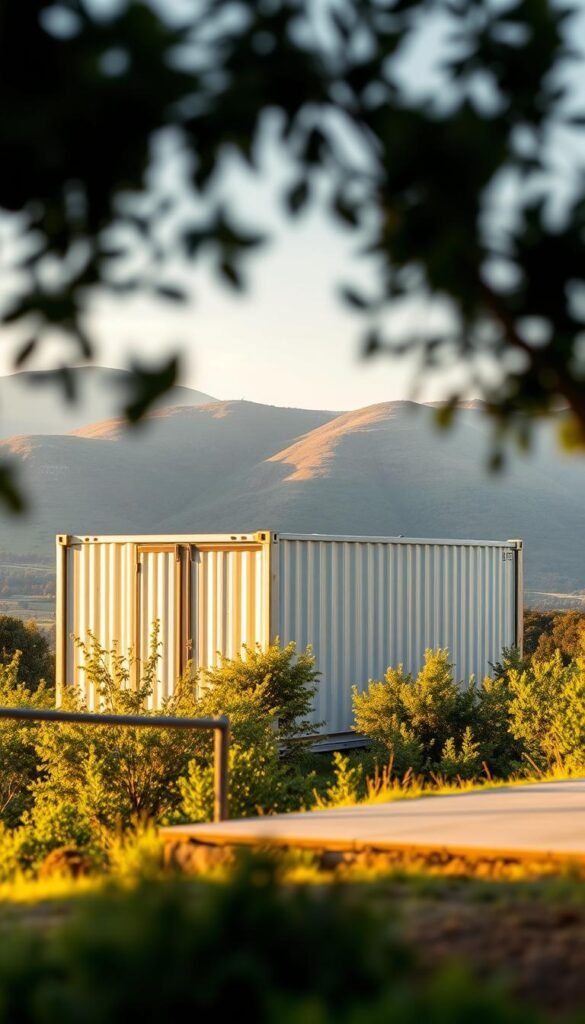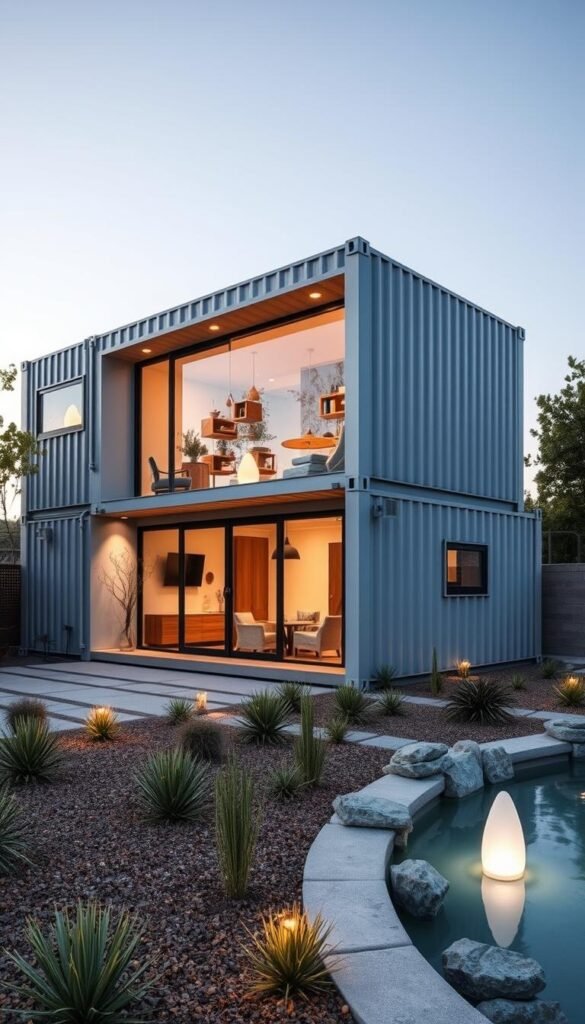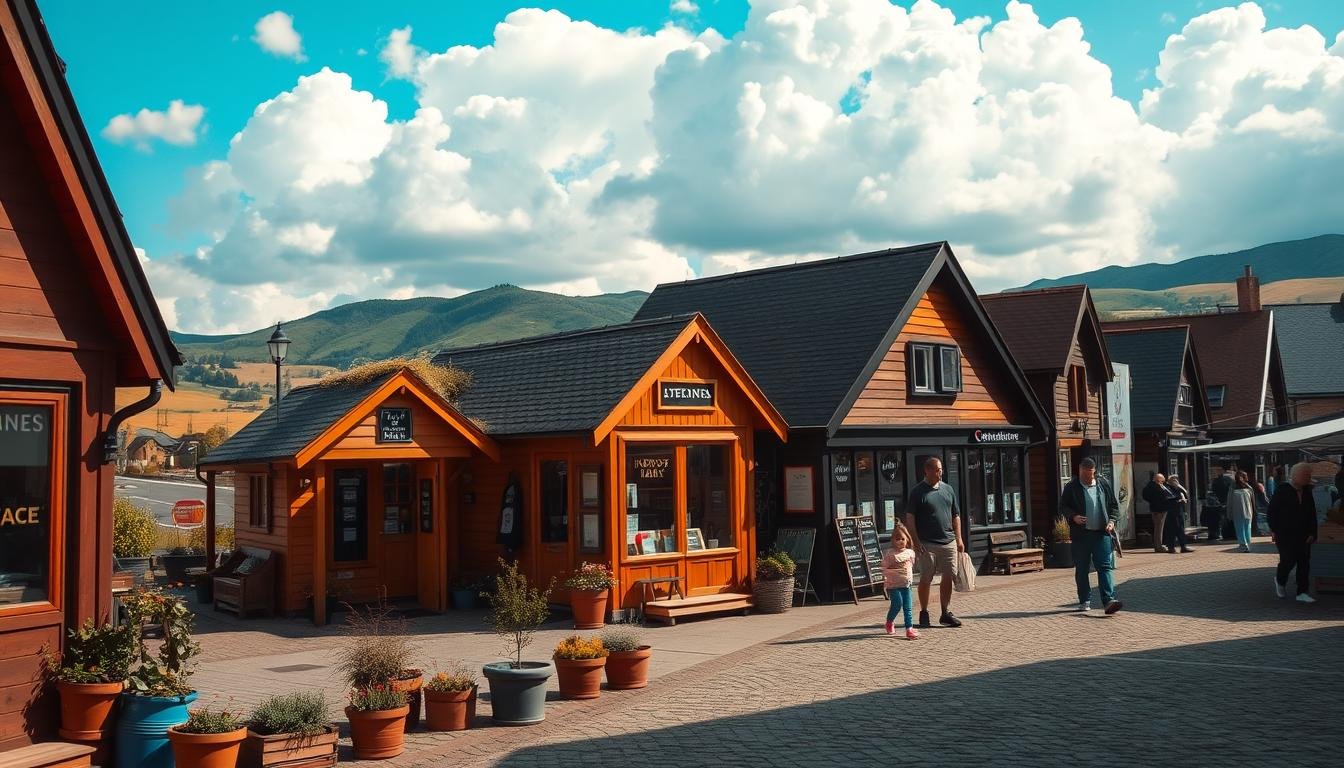As housing costs climb nationwide, creative solutions are gaining traction. Repurposed steel structures originally designed for cargo transport now spark interest as affordable dwellings. These industrial units offer a blend of durability and modularity, appealing to those seeking minimalist lifestyles.
Basic models start at $25,000, while high-end customized versions can exceed $175,000. For comparison, traditional construction in major Canadian cities averages $150–$275 per square foot. A 20-foot unit weighs over 5,000 pounds empty—nearly double the weight of standard travel trailers.
Steel-framed designs differ significantly from trailer-based tiny houses. Builders must address insulation challenges and local zoning laws. While social media showcases sleek conversions, real-world factors like permitting and foundation requirements demand careful evaluation.
Key Takeaways
- Steel structures weigh twice as much as traditional mobile dwellings
- Entry-level conversions cost 25% less than conventional home construction
- Custom designs can triple initial investment costs
- Municipal regulations vary widely for permanent installations
- Thermal efficiency requires specialized modification techniques
Overview of Shipping Container and Tiny Home Living
Alternative living spaces have evolved dramatically since their early adoption. Economic shifts and environmental awareness fuel this transformation, merging industrial materials with residential design. The repurposing of steel-framed storage units exemplifies this trend, combining rugged durability with modern aesthetics.

Evolution and Modern Trends
Originally built for global cargo transport, industrial storage units found new life through creative adaptation. Social media platforms amplified their appeal, showcasing sleek conversions that blend minimalism with industrial charm. However, early adopters faced challenges like zoning restrictions and thermal inefficiency in extreme climates.
Recent years brought smarter designs. Builders now integrate energy-efficient windows and advanced insulation systems. These upgrades address early criticisms while maintaining structural integrity.
Key Features and Materials
Standard units use Corten steel, a corrosion-resistant alloy that withstands saltwater and heavy loads. Their corrugated walls support stacked configurations, enabling multi-level designs. Common sizes include 160-square-foot models, though combined units create spacious layouts.
Space optimization drives interior planning. Foldable furniture and vertical storage maximize functionality. Some designs feature retractable decks or rooftop gardens, proving compact living doesn’t mean sacrificing comfort.
Are shipping‑container tiny homes practical? Pros and Cons Analysis
Modern housing innovations spark debates about functionality versus novelty. Let’s examine key factors influencing the viability of repurposed industrial units as residential spaces.

Structural and Financial Benefits
Pre-engineered frames slash construction timelines by 40-60% compared to conventional builds. Modular designs allow stacking units for multi-level layouts without extensive foundation work. Basic conversions start at $30 per square foot—significantly below traditional home cost averages.
| Feature | Traditional Home | Steel Unit Conversion |
|---|---|---|
| Build Time | 6-12 months | 2-4 months |
| Base Cost/Sq Ft | $150 | $80 |
| Extreme Weather Resistance | Moderate | High |
Implementation Hurdles
Temperature control demands spray foam insulation installations, adding 15-20% to project budgets. Municipal permits often require creative classification since 68% of US cities lack specific codes for steel dwellings.
Older units may contain lead-based paints, requiring professional remediation. Limited availability post-pandemic drives prices up 22% for quality containers. Moving 20-foot modules requires heavy-duty trucks like Ford’s F-350 series.
Design, Construction, and Customization Considerations
Transforming industrial modules into comfortable residences demands strategic planning. Builders must balance structural integrity with livability while navigating zoning laws and budget constraints.

Structural Modifications and Insulation Requirements
Cutting openings in corrugated steel walls weakens their load-bearing capacity. Reinforcing frames with steel beams becomes essential, especially for underground installations facing soil pressure. Closed-cell spray foam proves most effective for thermal regulation and moisture control.
Proper ventilation systems prevent condensation buildup. Rust-resistant coatings and gutter installations protect against weathering. These upgrades add $12–$18 per square foot to project costs.
Mobility, Cost, and Construction Challenges
Transporting modules requires specialized permits and heavy-duty trucks. Foundation preparation costs vary significantly—gravel pads start at $4,000, while concrete slabs exceed $15,000. Professional conversions cost 35% more than DIY approaches but ensure code compliance.
Creative Design Options and Space Optimization
Multi-functional furniture maximizes limited square footage. Murphy beds with integrated desks and ceiling-mounted storage systems create adaptable living spaces. Stacking modules vertically enables two-story layouts without expanding the footprint.
Combined units allow customized floor plans. Glass partition walls maintain open sightlines while defining functional zones. Rooftop decks extend usable area by 30% in many designs.
Conclusion
The appeal of unconventional dwellings lies in balancing creativity with practicality. Steel structures modified for residential use excel as permanent installations on rural land with flexible zoning. Organizations equipped with heavy machinery and logistics partnerships often achieve better results than individual homeowners facing transport and setup challenges.
Custom conversions demand 35% higher budgets than standard builds due to specialized insulation and rustproofing needs. While offering faster construction timelines, these units struggle with moisture control and space limitations compared to traditional houses. Frequent movers should consider lighter alternatives like travel trailers.
Before committing, research local codes and consult architects familiar with frame modifications. Prioritize climate-appropriate materials and realistic budget planning. When approached strategically, repurposed container homes can deliver durable, innovative housing solutions—but only for those prepared to navigate their unique challenges.



